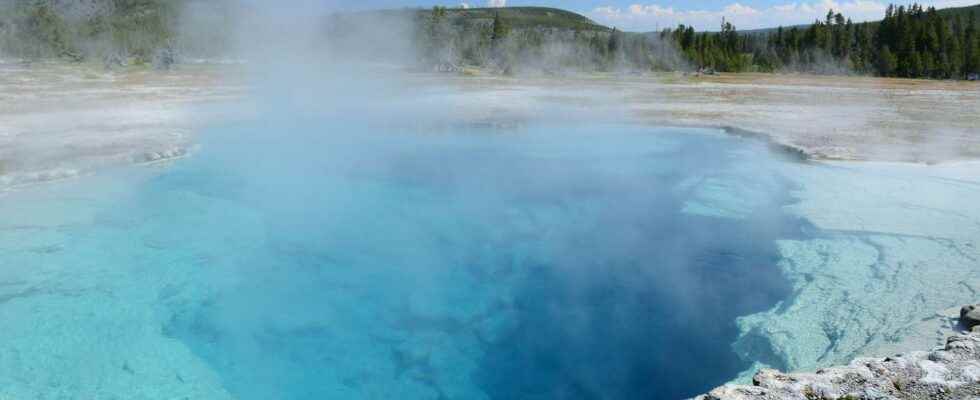Thermal springs, or hot springs, are natural resurgences of highly mineralized hot water. If they are often associated with magmatic processes and the proximity of a volcanic system, their presence can also be simply linked to a gradient geothermal above average.
There is no precise definition of a hot spring. This term is generally given to any natural source whose water exceeds the temperature of the environment. The temperature range is thus very wide and ranges from 20 to 100°C. The source of heat is on the other hand totally natural and comes fromenergy geothermal.
Water heats up as it travels through the bowels of the Earth
It’s a phenomenon physical well known as geothermal gradient: temperature increases with depth. Thus, while traveling underground, the water heats up on contact with the rocks. There is therefore no need for the presence of a nearby volcanic system. This is how hot springs are observed in regions with a strong geothermal gradientlike Alsace.
In these regions, the water will not need to penetrate very deep to reach high temperatures. This feature is widely used to cures and thermal treatments. In Morsbronn-les-Bains, for example, water naturally heated to around 40°C is drawn from two springs located 400 meters and 670 meters deep. The town of Plombière-les-Bains has the hottest spring in Europe: the water collected here reaches a temperature between 57 and 84°C.
There are also several natural hot springs in the Pyrénées-Orientales. The best known are the Bains de Canaveilles where water at nearly 60°C comes out in the bed of a river, the Bains de Dorres, the hot spring of Prats-Balaguer… But there are also some in the Hautes-Alpes, or in Ariège, not to mention those of the Massif Central.
Water heated by proximity to a volcanic system
The geological process leading to water heating in the Massif Central region is however slightly different. Because, if the geothermal gradient is particularly high here, it is because of the presence of an ancient volcanic system. In France, this system is no longer active, but in Iceland or in Yellowstone Park in the United States, the water is heated by almost direct contact with the magma present in the subsoil.
Thus these regions are rich in fumaroles and various hot springs such as geyserswhich regularly expel boiling water put under pressure. In these regions with active volcanism, the water from the thermal springs has a much higher temperature, close to 100°C when it emerges from the surface.
Mineral-laden waters
The high temperature of thermal waters increases their ability to dissolve minerals during their journey through the rocks: hot springs are therefore often very rich in minerals, which give them medicinal properties. This is why the resurgence sites were quickly exploited for therapeutic purposes.
You will also be interested
[EN VIDÉO] The geysers of Yellowstone Park in time-lapse Invitation to travel (accelerated) through the caldera of Yellowstone, dotted with geysers, which are as many air vents of hell reigning under the surface.
Interested in what you just read?
